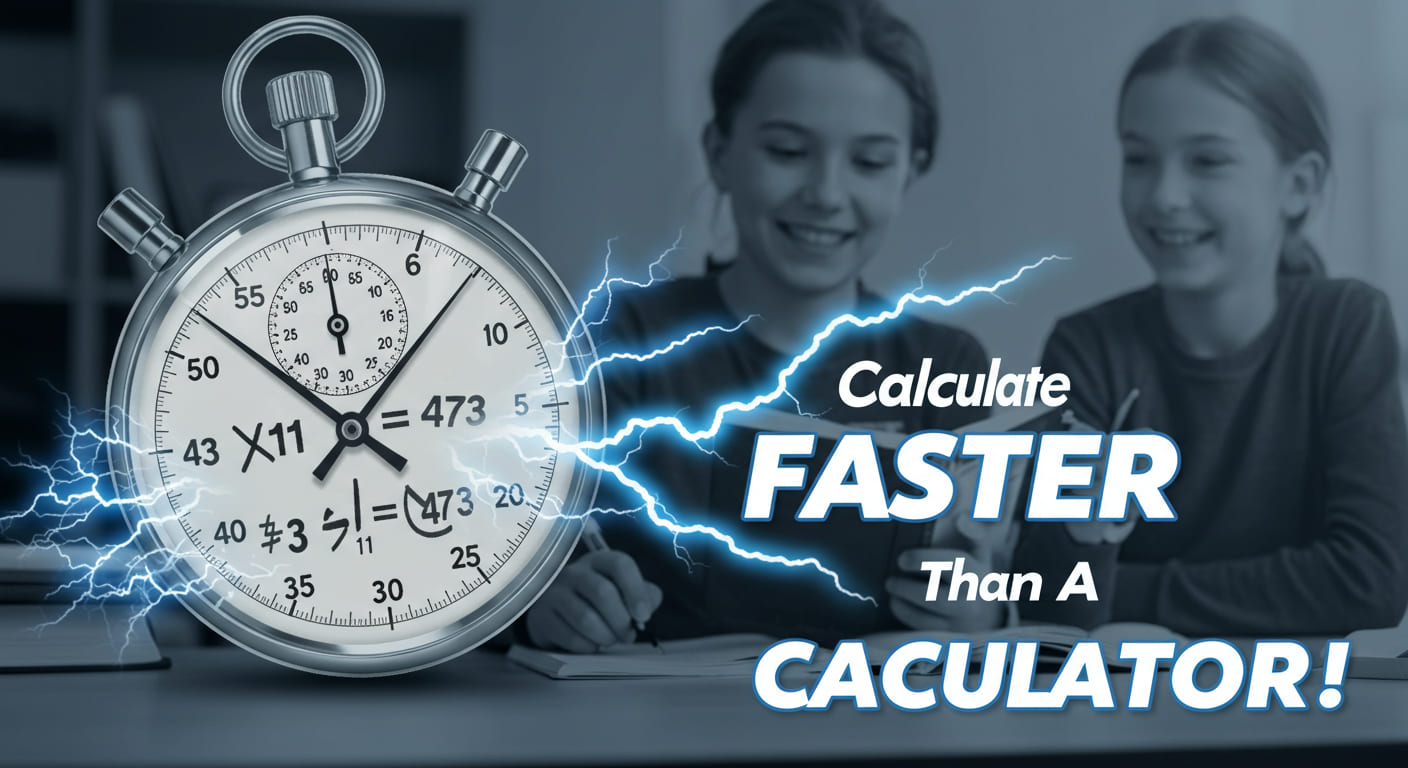No technology is needed and you have the answer in just a few seconds. Sounds like a superpower, right? When it comes to mathematics, attention is not limited to calculation, but rather on enhancing one’s mental abilities, social confidence, and relaxation. It is a sought-after skill for students in a bid to ease examination tension. However, mental calculation is useful in one’s daily routine and this article is meant to emphasize this point. We will consider a handful of useful mental calculation hacks derived from a YouTube video that exceeded expectations in order to enhance your self expectations. Let us begin and unleash the inner calculator in you.
The importance of Mental Calculation for Students
Mental calculation is not always entertaining (even though we love that it can be). The advantages of improving math skills include learning new logic, sharpening focus, and performing better under pressure in time-sensitive activities such as assessments, collaborative projects, or multiparty competitions. Moreover, it adds to confidence because the feelings associated with solving a problem mentally compared to other participants doing so by typing is distinctly different and satisfying. The suggested hacks based on a YouTube video are simple, actionable and easy especially for students who appreciate succinct instructions. So, buckle up as we master superpowers.
Stop Struggling with Multiplying by 11
When multiplying a two-digit number by 11, have you ever experienced a mental block? Here’s a trick that will enable you to solve it in record time. Let’s take the number 43. In a vertical manner, first, write the first digit 4, then compute 4+3 which equals to 7 and finally note down the last digit 3. What have you got? That’s right, 473. It’s that simple. In a matter of seconds! For cases like 68 * 11 where the sum is 10 or greater, you still apply the same logic. That is, carry one to the 6 (6+1=7) and append it to the left and write down the last digit of the sum which is 4. 748 becomes the answer. It works for three-digit numbers as well, making you faster than a calculator. What potential savings do you foresee during a test?
Multiply by 11 Example
Example: 43 × 11
- Write the first digit: 4
- Add the digits: 4 + 3 = 7
- Write the second digit: 3
- Answer: 473
Example with Carry: 68 × 11
- Write the first digit: 6
- Add the digits: 6 + 8 = 14
- Carry the 1 to the first digit: 6 + 1 = 7
- Write the last digit of the sum: 4
- Answer: 748
Square Numbers Ending in 5
Though daunting, squaring numbers, like \ (75 \times 75\), can be done with this easy trick: take the first digit (7), multiply it by the next number (8) to get 56, then slap 25 on the end (5625). Let’s try with 35 \(\times\) 35: 3 \(\times\) 4 = 12, add 25, you get 1225. This method works perfectly for fast calculations during group study sessions or double-checking computations. Imagine how much time this could save you on homework!
Multiply Numbers with the Same First Digit and Endings That Add up to 10.
Got numbers like 44 × 46? Notice the first digit is the same (4), and the endings add to 10 (4 + 6). Multiply the first digit by the next number (4 × 5 = 20), then multiply the endings (4 × 6 = 24). Answer: 2024. Try 67 × 63: 6 × 7 = 42, 7 × 3 = 21, so it’s 4221. This method is a lifesaver for quick approximations in physics or economics problems. Can you think of a class where this could shine?
Extend the 11 Trick to Three-Digit Numbers.
The eleven trick is useful for two digits, but why limit it to just that?
Then, calculate 352 × 11 as 3 and 2. Third and fifth numbers are 5 and 3, respectively, thus:3+5=8 and 5+2=7. So, the final answer is 3872. In cases like 574 × 11, apply the carry method: 5 becomes 6, and 7 gives 3. Cumulatively this gives you 6314. This method is ideal for expanding computations for statistical or financial calculations. What if you could ace these during a speed test?
Practice Makes Perfect
These tips will become intuitive over time, like learning to balance on a bicycle, but at first, they will feel clunky. Simply dedicate a few minutes a day doing these with random digits and watch the magic happen over time. Watching your grades and overall academic anxiety plummet is life-changing. Wouldn’t it be great to stroll into an exam room relaxed and confident?
Key Takeaways
- Multiply by 11: Add the digits and place the sum between them for instant results.
- Square numbers ending in 5: Multiply the first digit by the next number, add 25, and you’re done.
- Same first digit, endings add to 10: Combine two multiplications for quick answers.
- Three-digit 11 trick: Extend the two-digit method for bigger numbers with ease.
- Practice daily: Build speed and confidence to ace exams and impress peers.
Conclusion
Mental math isn’t a one-size-fits-all skill—some tricks will click for you faster than others, and that’s okay. The beauty of these techniques is how they empower you to tackle numbers with confidence, whether you’re budgeting for a trip or acing a calculus exam. They’re not just about speed; they’re about owning your potential. So, grab a notebook, try these tricks, and see how they fit into your life. You might just surprise yourself with how fast your brain can be. What’s one calculation you’ll try today?
